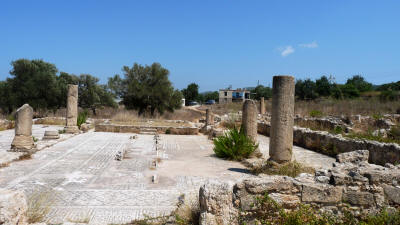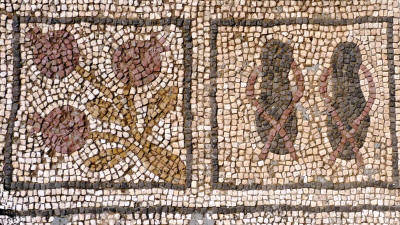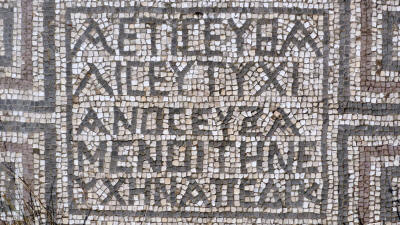Aya Trias Basilica
Sipahi, Yenierinkoy, North Cyprus
 |
| Aya Trias Basilica, Looking into the Central Nave |
Aya Trias Basilica is located a few hundred meters off the coast road, to the north of the village of Sipahi.
Built at the start of the 6th century, the basilica was destroyed during the Arab raids of the 7th century. It was then abandoned, and a small church and other buildings were built to the south. These buildings in turn were abandoned and destroyed around the 9th century. All memory of the basilica disappeared, until it was rediscovered by chance in 1957, when it was partially excavated. There is, however, still a great deal for the archaeologists to do.
 |
| The Basilica, Looking Through the Atrium to the Narthex and Nave |
What can be seen of the basilica today is an entrance atrium at the western end of the basilica, (the end furthest away from today's entrance gate). This leads to an entrance lobby, or narthex, spanning the width of the basilica. This in turn leads to a three-aisled nave, with a number of columns still standing. here you can see the remains of a chancel. There is a large central apse and two smaller apses to the north and south.
 |
| Pomegranate and Sandal Mosaics |
To the southeast of the basilica, you can see the remains of a large cross shaped baptismal chamber, the largest known on the island. It is thought that the other structures you can see here are the remains of the Bishop's Palace.
The narthex and nave are extensively covered with mosaics, mostly geometric patterns. In the northern nave, however, there are some exceptions. In particular, a pomegranate tree, alongside a pair of sandals.
 |
| The Sponsors of the Basilica |
Pomegranates were used by the early Christian as a symbol of resurrection and everlasting life. The sandals are a little bit more of a mystery. It is possible they were a reminder of the time when Moses took off his sandals in order to meet God in the desert. It is also possible that it is a reminder of the time that John the Baptist described the coming of Christ, explaining that he was not even important enough to remove the sandals from Christ's feet. More likely, though, is because they are close to the pomegranates, they simply represent the journey through this world to the next. Although sandals as a symbol, are found elsewhere in the Middle East, this is the only known example in Cyprus.
One thing we do know about the basilica, however is who paid for its building. A mosaic inscription in front of the main apse, credits a deacon by the name of Heraclios. At the western end of the nave, we can also see the names of Aetis, Euthalis and Eutychianos as benefactors.
One mystery remains. The basilica is much bigger than would be needed for the use of the village that has so far been discovered, so if there is no bigger village here, why was the basilica built?
|
|
| Heraclios the Deacon Paid for the Building of this Part of the Structure |
See the location on Google maps.
Return to Dipkarpaz index.